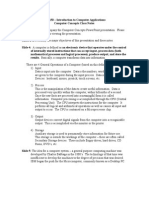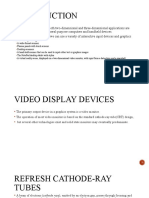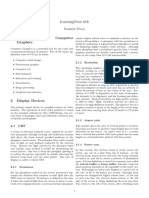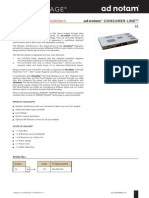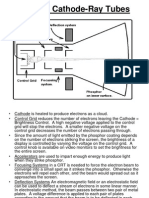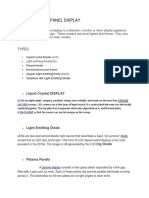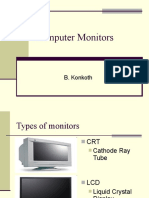0% found this document useful (0 votes)
208 views68 pagesUnit I Lecture 2 Display Devices
The document discusses various types of video display devices used in computer graphics, including cathode ray tube (CRT) monitors, flat panel displays, and three-dimensional viewing devices. It focuses on describing the components and functioning of CRT monitors, which were the most common display device. Key components of a CRT include the electron gun, control grid, focusing system, deflection system, and phosphor-coated screen. CRTs use raster scan displays to refresh the screen by drawing each frame in sequential lines using an electron beam.
Uploaded by
Krishan Kant ShuklaCopyright
© © All Rights Reserved
We take content rights seriously. If you suspect this is your content, claim it here.
Available Formats
Download as PDF, TXT or read online on Scribd
0% found this document useful (0 votes)
208 views68 pagesUnit I Lecture 2 Display Devices
The document discusses various types of video display devices used in computer graphics, including cathode ray tube (CRT) monitors, flat panel displays, and three-dimensional viewing devices. It focuses on describing the components and functioning of CRT monitors, which were the most common display device. Key components of a CRT include the electron gun, control grid, focusing system, deflection system, and phosphor-coated screen. CRTs use raster scan displays to refresh the screen by drawing each frame in sequential lines using an electron beam.
Uploaded by
Krishan Kant ShuklaCopyright
© © All Rights Reserved
We take content rights seriously. If you suspect this is your content, claim it here.
Available Formats
Download as PDF, TXT or read online on Scribd
/ 68
